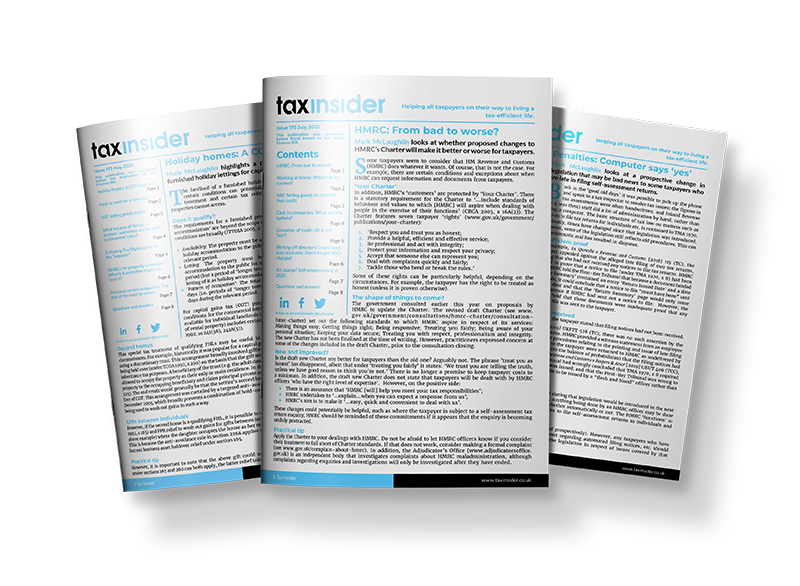Ken Moody considers the advantages of placing a holding company on top of a trading company to form a small group and points out some potential disadvantages.
This is a sample article from our tax saving newsletters - Try Tax Insider today.
----------------------
There are good tax and commercial reasons why you might want to interpose a holding company (‘Holdco’) on top of a trading company (‘Tradeco’).
Why and how?
A buyer for the trade or part of the trade may not agree to purchase Tradeco itself, possibly for ‘legacy’ reasons or possibly because Tradeco holds assets which the buyer does not want. The capital gains substantial shareholdings exemption (SSE) applies where an ‘investing company’ holds shares in the ‘company invested in’ and the substantial shareholding requirement is met (for convenience, let’s call the companies A and B). The requirement is met, briefly, where A has held a substantial shareholding of at least 10% of the ordinary share capital of B for at least 12 months ending with the disposal of B.
Where at the time of the disposal, B holds an asset used in its trade which had previously been used by another group company (C) in its trade, the period for which A is treated as having held the shares in B may be extended by the period for which the asset was used by C.
In the above scenario, Tradeco could hive down its trade and related assets to a new subsidiary, the shares in which are then sold to the buyer. SSE will be available provided that the total period for which the trading assets (e.g., goodwill) were in use in the trades of both companies is at least 12 months. The snag, however, is that a group must have existed for that period on a strict interpretation of the legislation as adopted by HMRC (see HMRC’s Capital Gains manual at CG53080C). Interposing Holdco, therefore, establishes a group structure should the above scenario come about.
The structure is a fairly simple matter of Holdco issuing its shares to the shareholders of Tradeco in exchange for their shares in Tradeco. For capital gains tax (CGT) purposes, this is a reconstruction (within TCGA 1992 s 135), whereby the share reorganisation provisions (TCGA 1992, ss 126–131) apply as if both companies were the same.
Are you sure?
However, it needs to be borne in mind that while it is fairly simple to interpose Holdco, the process is not easily reversible. The shareholders’ ultimate aims for the development of the business and, ultimately, the realisation of their investment need to be considered.
For example, a buyer may wish to ‘lock in’ the existing management team by issuing shares in the acquiring company to them as part of the consideration for the sale. This is not straightforward, however, if the shares in Tradeco are not held personally. It may be possible for Holdco to be sold instead, but that may not be viable for legacy reasons or where Holdco owns assets which the buyer does not want. Transferring the shares in Tradeco back to the shareholders would give rise to an income tax distribution or, if Holdco were placed in liquidation, CGT on the value of the assets distributed (as well as gains in Holdco on any chargeable assets other than the shares in Tradeco).
The solution might be to demerge Tradeco either by means of a ‘capital reduction demerger’ or a liquidation demerger under the Insolvency Act 1986, s 110. Both would result in the shares in Tradeco being acquired by a new ‘clean’ holding company owned by the shareholders of Holdco, which is then the subject of the deal with the buyer.
Practical tip
Unless a holding company is required for asset protection, an alternative strategy may be to form a dormant subsidiary of the trading company. There is nothing in the relevant legislation (TCGA 1992, Pt 6) which suggests that a subsidiary needs to be carrying on any business to be part of a CGT group.





